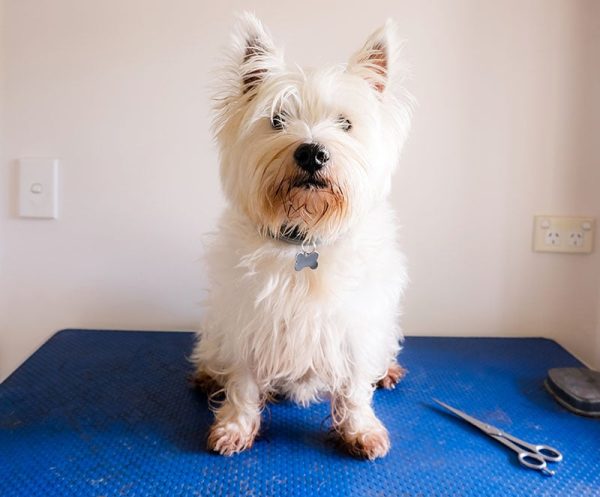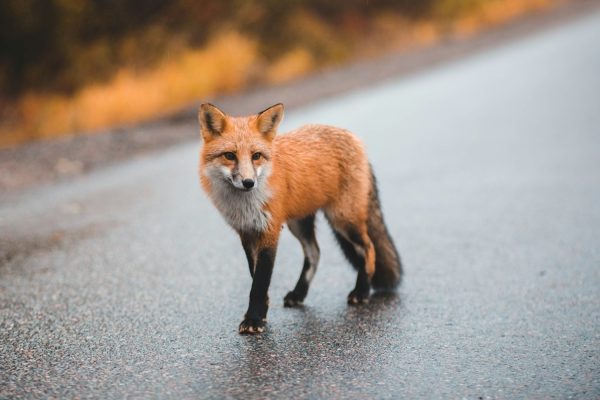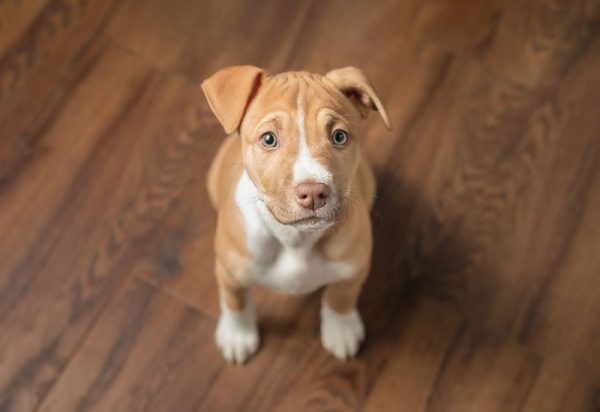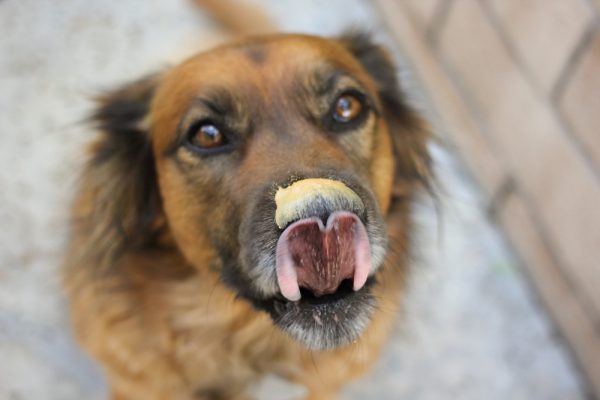In this article
View 8 More +Hailing from the frigid Arctic Circle, the Finnish Lapphund can warm the home with their tender and outgoing personalities. Few know of the Lappie outside their native Finland, but those who almost always fall in love with the plush coat, soft expression, and charm that defines the breed.
Find out why the Finnish Lapphund might be an ideal fit for your family as we discuss their temperament, traits, and behaviors.
Breed Overview
Height:
16–21 inches
Weight:
33–53 pounds
Lifespan:
12-15 years
Colors:
Black, brown, blonde, tan, cream, wolf sable
Suitable for:
Experienced owners who enjoy training and outdoor activities, families with other dogs
Temperament:
Friendly, spry, alert, clever, biddable, gentle, loving
As a quintessential Nordic breed in looks, the sweet-faced Finnish Lapphund brings out many of the best qualities Spitz-type breeds offer. They’re loving, intelligent, active, and healthy, and the fluffy coat is one of the best for end-of-day cuddling. The hardworking and friendly Finnish Lapphund is typically a pleasure to anyone they meet.
Finnish Lapphund Characteristics

Finnish Lapphund Puppies
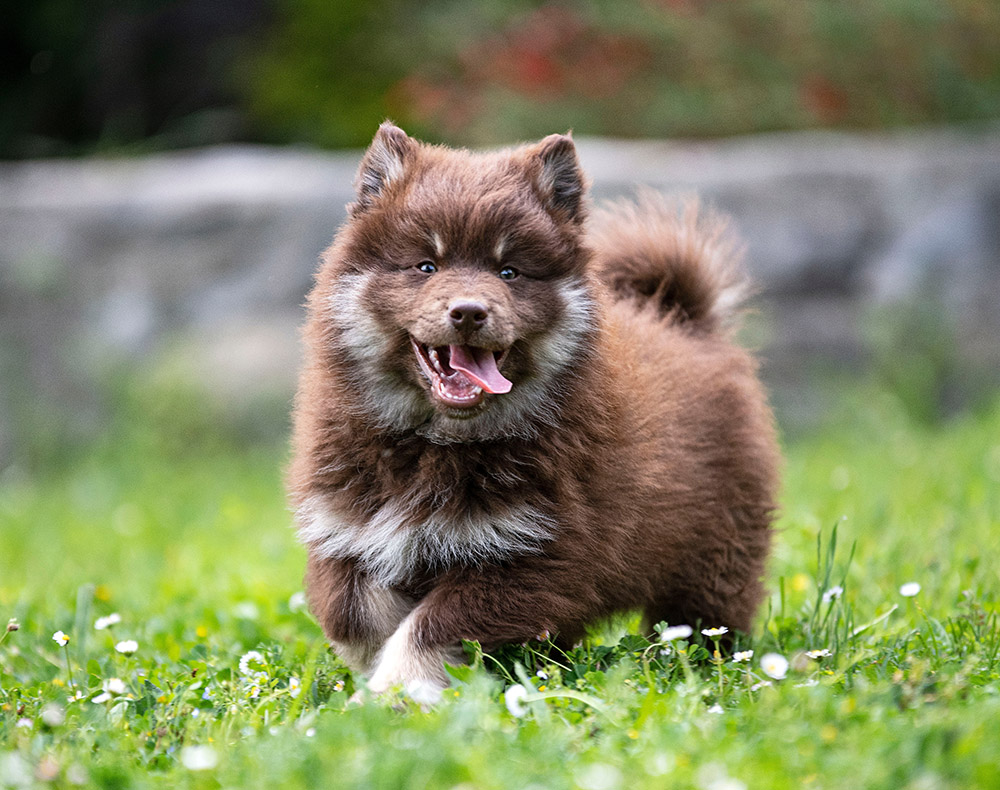
Finnish Lapphunds mature into social, calm dogs if you can survive the challenging early months. Puppies need constant supervision. They are exuberant, curious, and inexperienced, leading to ceaseless activity, including digging, yapping, and chewing anything they can find.
Socializing is critical, and your Lappie will love it as they enthusiastically greet other dogs during your walks. You can set boundaries and start training immediately to keep your dog from practicing poor behaviors and get them used to being obedient.
Training won’t be easy at this energetic young age, particularly when your dog reaches adolescence. But patience, positivity, and consistency will ensure they come out the other side of puppyhood as a well-adjusted, well-behaved adult.
Since they’re relatively new and rare in the United States, Finnish Lapphunds take time and research to find. Once you locate a breeder, you may have to sit on a waitlist for several months or over a year. If you’re willing to travel, you can find reputable breeders through the Finnish Lapphund Club of America or the AKC Marketplace.
Always vet breeders and interact with the dogs while asking plenty of questions before deciding to ensure you and your breeder find the best fit for your lifestyle.
Finnish Lapphund Origin & History
The Finnish Lapphund comes from Lapland, an area spanning northern sections of Norway, Sweden, Finland, and parts of Russia. For centuries, the athletic breed was valuable for the indigenous Sami people as a hunter and, later, herder of reindeer in their frigid realm.
Though Sami traditions evolved with technology, Finnish Lapphunds transitioned to modern-day companions thanks to breeding efforts in the 1940s. The Finnish Kennel Club was established in 1945 to keep records of the Lapponian Shepherd Dog.
Eventually, the breed separated into short-coated and long-coated varieties. The former became the Lapponian Herder, while the latter took the Finnish Lapphund name.
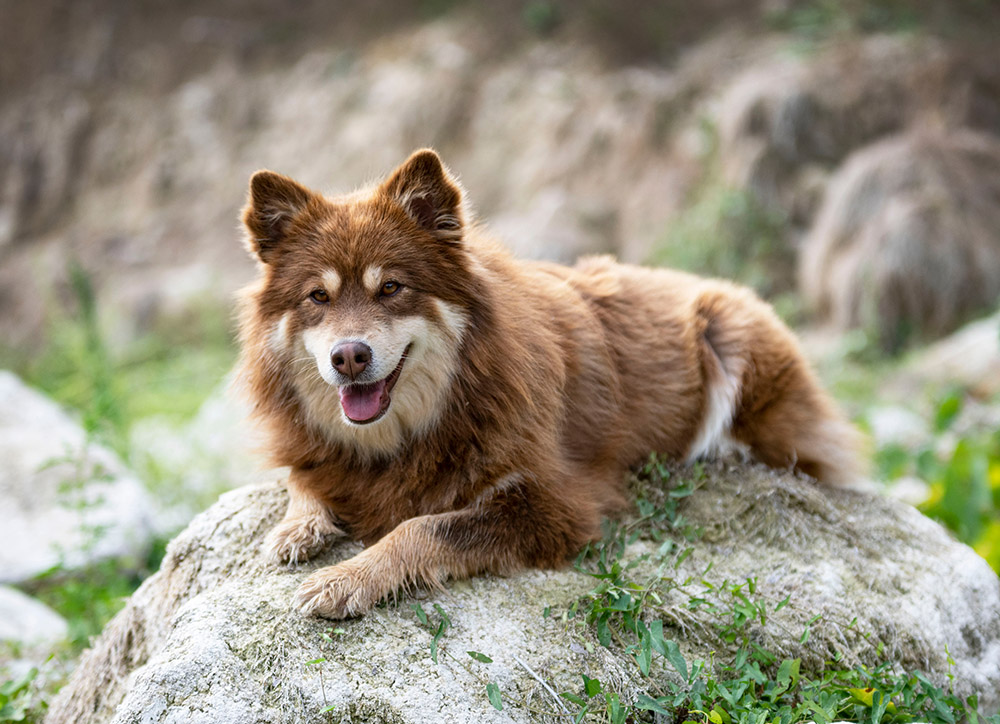

Temperament & Intelligence of the Finnish Lapphund 🧠
The Finnish Lapphund is easy to get along with, no matter who you are. They are calm, submissive, and affectionate. Though always alert and sometimes wary of strangers, they aren’t aggressive and err more toward being friendly than aloof.
As working dogs, Finnish Lapphunds are eager to train and please their owners if given a job. The crucial point to remember is that these are skilled herders. They’re a thinking breed.
The high intelligence and problem-solving skills that make Finnish Lapphunds such quick studies during training mean they can also bore easily, leading to stubbornness and unwanted behaviors like excessive barking if they don’t get the attention they deserve.
Are These Dogs Good for Families? 🏠
Finnish Lapphunds thrive with families because they have more people to give them time and attention. They aren’t large dogs, and they have exceptional awareness. Their gentle yet playful manner is perfect for children, giving them a fun friend who knows when to take it easy.
Training young children in proper manners is crucial. Although they’re tolerant, Finnish Lapphunds can easily get injured from overly rough play and awkward handling. Children and dogs should always interact under an adult’s supervision.

Does This Breed Get Along With Other Pets? 🐶 😽
Finnish Lapphunds love company in any way they can get it. They’re excellent play buddies for other dogs, offering the same consideration they show the rest of the family. Cats and smaller animals may present some challenges due to the Lappie’s prey drive. Early and slow introductions or raising your two pets from a young age will typically engender a friendly, caring dynamic.

Things to Know When Owning a Finnish Lapphund
Finnish Lapphunds are a high-energy breed that thrives with ample outdoor space to run and play as long as they have a high, enclosed fence. They have a high prey drive and will readily chase squirrels, cats, rabbits, and anything moving fast, so you must ensure supervision and containment. On-lead behaviors and recall are training priorities.
Ample exercise and mental enrichment help Finnish Lapphunds stay focused and out of trouble. You must be active to own one and provide plenty of fun activities outside and in the house. Finnish Lapphunds can be prone to separation anxiety, so any way to occupy their brains will help them relax and stay happy even when alone.
While you’re home, this engagement also helps limit their vocalizations. Finnish Lapphunds are always watchful and will alert you when visitors arrive. Though they like to bark and can get randomly chatty, much of it will come from them becoming understimulated and needing entertainment.
Food & Diet Requirements 🦴
Finnish Lapphunds need a high-quality diet rich in protein and healthy fats to maintain their athletic, active bodies and soft coats.
You can provide your dog with food appropriate to their life stage to keep them healthy. As adults, they’ll only need about 2 cups of food daily between two meals, with fresh water available at all times.
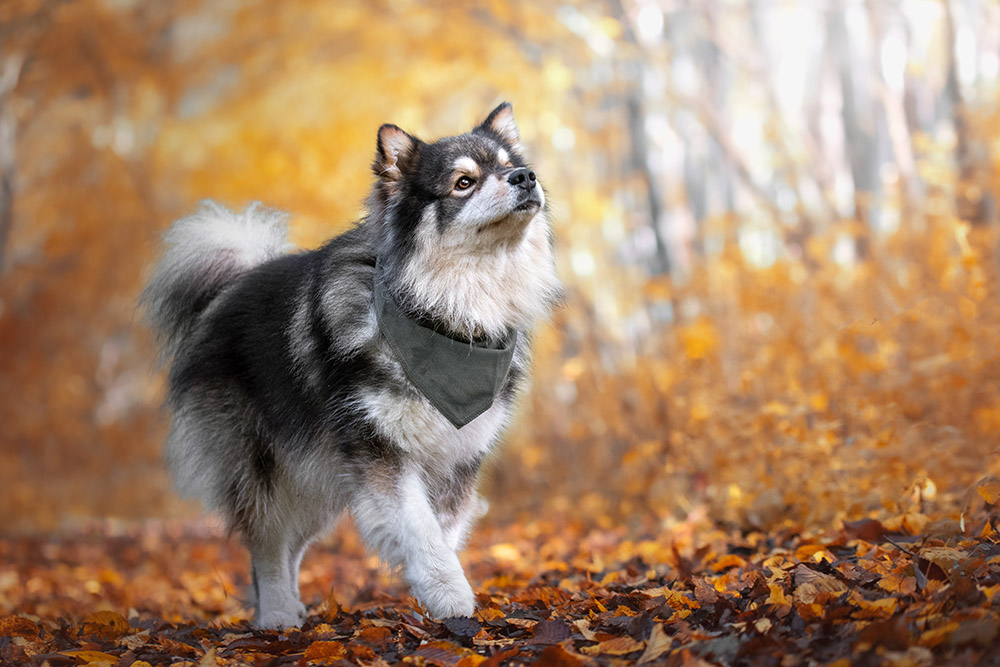
Exercise 🐕
Finnish Lapphunds need about an hour of exercise daily, though they will gladly take more. A long walk paired with 30 minutes of backyard play will suffice, or you could take them on more rigorous jogging or hiking excursions.
Outdoor physical exercise and indoor mental exercise will make all the difference in preventing your dog from engaging in bored behaviors and mischief.
Training 🦮
Training and socializing your Finnish Lapphund is essential from the outset, as they can be independent and willful without firm yet positive guidance. Early obedience classes are an excellent opportunity to accomplish both and get your dog started with developing proper behaviors.
Crate training and working on leaving your dog alone can help them adjust to your work schedule and avoid feelings of separation anxiety. Outdoors, recall can be a challenge, but making it a training focus will open your dog to all the fun opportunities they desire, like playing at a dog park or participating in organized events.
Finnish Lapphunds are incredibly versatile dogs, allowing you to engage their minds and bodies in countless activities. They are naturals in herding trials but can excel equally well in agility, obedience, rally, flyball, tracking, and much more.
Grooming ✂️
If you’re looking for a hypoallergenic dog, the Finnish Lapphund isn’t for you. The fluffy and heavy-shedding double coat needs frequent brushing with a slicker brush and rake to prevent mats and remove dead hair and fur.
Daily brushing will prevent hair from filling the house during the spring and fall shedding seasons. Fortunately, the coat doesn’t require cutting, except around the paws. When bathing, you must blow dry your Finnish Lapphund’s coat to ensure they are dry to the skin.
Blow drying will also help remove even more dead fluff and provide a clear view of the skin through the dense hair. Beyond the exhaustive coat demands, you’ll have to check and wipe your dog’s ears weekly and trim their nails every few weeks.
You should brush their teeth at least once every couple of days. Since some of these steps can be stressful for a dog, introduce the various grooming tasks early to help them build their comfort and confidence with the routine.

Health and Conditions ❤️
Finnish Lapphunds are fit, healthy dogs that generally live long lives. Notable conditions to watch for include Pompe disease (often fatal disorder), hip and elbow dysplasia, and eye disorders, such as progressive rod-cone degeneration (a late-onset form of PRA), cataracts, and glaucoma.
As you look for the next family pet, ensure your breeder performs the necessary orthopedic, ophthalmologic, and DNA testing to avoid these issues in your dog.
- Hip and elbow dysplasia
- Eye disorders (e.g., PRA, multifocal retinopathy)
- Degenerative myelopathy
- Hyperuricosuria
- Pompe disease

Male vs Female
Male and female Finnish Lapphunds differ slightly in size, and the males are 2–3 inches taller. Males have a more masculine look, with a denser coat and a mane of long, thick hair that grows around the neck.
Though they get along well with other dogs, same-sex aggression can occur. Finnish Lapphunds will stand their ground when challenged, even if they don’t go looking for trouble. Generally, little separates the sexes temperament-wise.

3 Little-Known Facts About the Finnish Lapphund
1. Finnish Lapphunds Have an Unusual Bark
Many Spitz types like to talk, and the Finnish Lapphund is no different. Lappies might surprise you with their diverse vocalizations, particularly their bark. Though they may seem strange, their high-pitched tones were a practical benefit during the dog’s reindeer-herding days.
When directing reindeer, Finnish Lapphunds would use their voice to signal the herd. The loud bark was effective in grabbing attention, but the herd could identify from the unique sound that they were hearing the dog and not a nearby predator.
As Finnish Lapphunds evolved from herders to companions, their disarming vocalizations are now considered one of the friendliest barks among all canines.
2. They Are Closely Related to Wolves
All dogs originated with wolves tens of thousands of years ago, but the Finnish Lapphund may have one of the closest ties to wolf ancestors of any breed. A study involving mitochondrial DNA testing determined a particular haplogroup (a population with a common ancestor), subclade d1, had a unique origin in relatively recent history.
The subclade includes northern Scandinavian Spitz breeds. At some point within the last 480–3,000 years, a domesticated male dog crossed with a female wolf to give us the Lapphund’s ancestors. Researchers believe the crossing benefited the breeders, allowing the wolf-dog mix to grow in numbers.
3. Finnish Lapphunds Have a Quick Startle Reflex
Finnish Lapphunds are known for an acute startle reflex despite their otherwise calm personalities. In their original working role, this was a crucial trait when dealing with the sudden kicks and lunges from the massive reindeer they herded.
The dogs had to react instantly if they were to avoid severe damage. Owners will still see that sensitivity in their Lappies, as any sudden or rapid movement will cause them to perk up.

Final Thoughts
Although they are among the most popular dogs in Finland, the Finnish Lapphund is still finding their footing in America. They have a well-balanced temperament, marrying friendliness and submissiveness with drive, determination, and talent. They are an undeniable joy for devoted owners, and hopefully, we’ll see them become more widely available for dog lovers nationwide as their profile grows.
Featured Image Credit: cynoclub, Shutterstock









